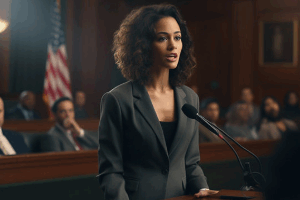 As the final years of the last millennium began to eke away, the powers-that-be in Washington decided to update the copyright laws to embrace the emerging “digital age.” The year was 1998 and the World Wide Web was not yet the internet and pets.com was a success story that would never, ever tarnish.
As the final years of the last millennium began to eke away, the powers-that-be in Washington decided to update the copyright laws to embrace the emerging “digital age.” The year was 1998 and the World Wide Web was not yet the internet and pets.com was a success story that would never, ever tarnish.
At that time, the creaking-with-age 1976 Copyright Act was not well-situated to address online distribution and digital reproduction in any meaningful way. And the drafters needed a way to protect copyrighted works that were at that time zinging around the internet at low speeds but with increasingly high frequency.
One provision cooked up to address the changing landscape was 17 U.S.C. 1202, which recognized the importance of metadata and other copyright management information. Around the time of its drafting, the hacking of Content Scrambling System (“CSS”), which was the movie studios’ prized digital rights management protocol, was all over the news. CSS was used to protect the files on film DVDs from being hacked, but it was quickly breached and discarded while region-free, hacked versions of There’s Something About Mary proliferated. This new amendment to the Copyright Act, it was believed, could potentially curtail such problems.
Section 1202(b) laid the groundwork: “No person shall, without the authority of the copyright owner or the law … intentionally remove or alter any copyright management information” or “distribute, import for distribution, or publicly perform works, copies of works, or phonorecords,” with removed or altered copyright management information, knowing or having reason to know that such conduct “will induce, enable, facilitate, or conceal an infringement of any” copyright.” In application, it protected a content creator against the removal of any metadata, watermark, or other copyright management information from a work. Courts have grappled with this new protection over the past 20 years, though, and, earlier this year added another relatively opaque opinion to the mix in the form of a Ninth Circuit decision in Stevens v. CoreLogic, Inc.
Robert Stevens and Steven Vandel are professional photographers whose business includes creating polished images of residential real estate. They, like most professional photographers, add metadata to their photographs. While not visible on the face of the photograph, metadata embedded in the file and viewable if you know where to look and how to right-click. Metadata often includes the name of the author, the title of the work, the date it was created, and other identifying information. Most photographers add metadata to track their photographs and ensure that they are properly credited (and compensated) when their photographs are published online.
Stevens and Vandel licensed their real estate photographs to real estate agents, who used the works to advertise and market properties they are looking to sell. Real estate agents looking to reach the broadest possible audience upload photographs to Multiple Listing Services, which are “computerized databases of listed properties,” by using CoreLogic’s software to process and distribute the photographs.
“MLS” is a generic term used to refer to massive online networks populated by real estate agents and saturated with photographs and information about properties for sale. Problematically, when photographs were submitted to CoreLogic for distribution across the MLS networks, CoreLogic’s software stripped the photographs’ metadata, disseminating the photographs out into the wild with no indication as to who created the works or what the terms of use might be.

Free Attorney Time Tracking Template For Smarter Billing
Tired of messy time logs? This free attorney time tracking template helps you bill with confidence and accuracy. Learn more in the full article.
It was undisputed that CoreLogic stripped the metadata and undisputed that ChoiceLogic intentionally wrote its program to do so (it rewrote the program after the case was filed to leave the metadata intact). This would seem to be a straightforward case of a company “intentionally removing” copyright management information from copyrighted works and distributing copyrighted works with knowledge that the copyright management was removed.
But, as the Ninth Circuit points out, 1202 applies only when it is shown that the defendant “possesses the mental state of knowing, or having a reasonable basis to know, that his actions will induce, enable, facilitate, or conceal” infringement.” While CoreLogic certainly knew that it was removing the photographer’s metadata from the photographs, and knew it was then sending these photographs out across various networks, the court found that the photographers failed to make an “affirmative showing” that CoreLogic had the wrongful intent to induce, enable, facilitate, or conceal infringement.
This finding was somewhat surprising given that the same Ninth Circuit judge who wrote the CoreLogic opinion wrote another 1202 opinion a couple of years ago that concluded that “direct proof of one’s specific wrongful intent is rarely available.” In that case, the Ninth Circuit reversed a summary judgment grant against a 1202 plaintiff because it would be “unfair to burden” a party with establishing the other side’s knowledge of improper copyright management information at the summary judgment stage. Here, the plaintiff was far less lucky.
The CoreLogic decision was also peculiar in that its analysis was guided by a criminal case opinion that addressed the Trafficking Victim’s Protection Act, of all things. And the court employed that case’s approach to divine how a party could discharge the nebulous burden of proving that the opposing party intended that some act occur in the future. It concluded that an intent to facilitate a future act could be shown by demonstrating a past “pattern of conduct” or “modus operandi,” on the part of the infringer, which certainly reads much into 1202’s language and seems to increase the burden beyond reason. Copyright infringement is most often a one-off act and it is rare to establish a pattern or even a motive (other than making money).
But, even then, the court noted that the burden could be met by showing the alleged infringer “was aware or had reasonable grounds to be aware of the probable future impact of its actions.” Here, it is certainly reasonable, especially at the summary judgment stage, to infer that CoreLogic knew that by stripping thousands of photographs of metadata and distributing them across the internet they were increasing the likelihood of others using those photographs without permission. Which would seem to indicate that CoreLogic “facilitated” any infringement that resulted from the misuse of the stripped photographs.
The court, though, focused not on CoreLogic’s removal of the copyright management information but instead on the photographers lack of proof of “policing infringement by tracking metadata.” This also does not seem to be in line with 1202’s language, which focuses on the alleged infringer’s mental state, not the plaintiff’s. Yet the photographers did themselves no favors in this regard by testifying, for example that they “didn’t even realize you could click on a picture off the Internet, right-click it, and get metadata off of it.”
When emerging technology and statutory language that, while 20 years old, has not received much elucidation, and the arts collide, we are bound to have to dig deep for the right result. While I am not sure the CoreLogic decision was the right one, I am positive that we will have plenty of additional occasions to ventilate 1202 and discern what those visionaries in 1998 were trying to accomplish.
 Scott Alan Burroughs, Esq. practices with Doniger / Burroughs, an art law firm based in Venice, California. He represents artists and content creators of all stripes and writes and speaks regularly on copyright issues. He can be reached at [email protected], and you can follow his law firm on Instagram: @veniceartlaw.
Scott Alan Burroughs, Esq. practices with Doniger / Burroughs, an art law firm based in Venice, California. He represents artists and content creators of all stripes and writes and speaks regularly on copyright issues. He can be reached at [email protected], and you can follow his law firm on Instagram: @veniceartlaw.
